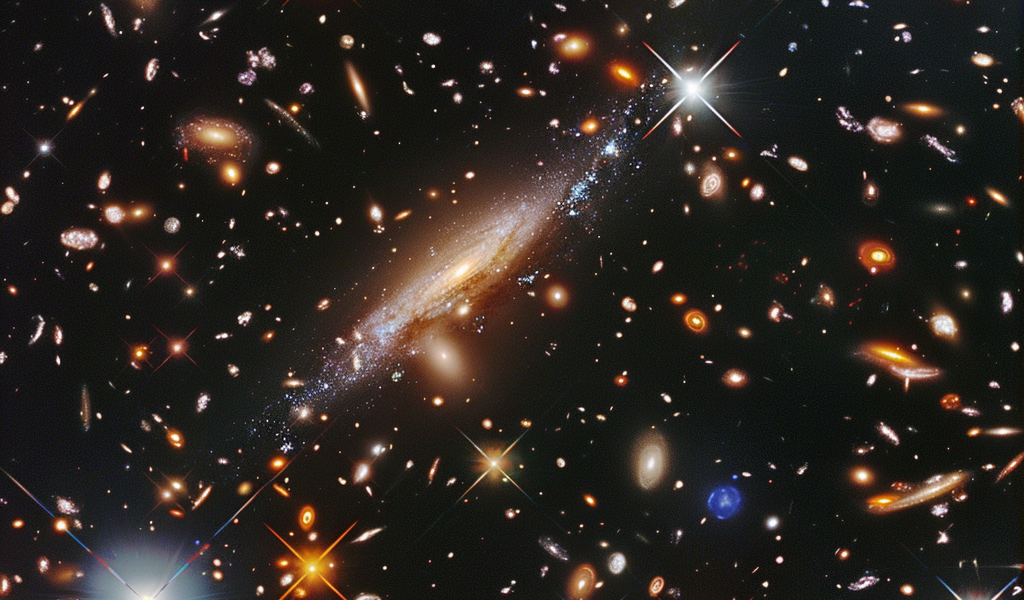Recent advancements in astronomical research have shed light on the enigmatic formation of the universe’s largest galaxies, particularly elliptical galaxies. A team from the University of Southampton has been investigating this phenomenon, which they describe as an “intergalactic mystery.” Their findings suggest that massive cosmic collisions occurring approximately 12 billion years ago played a crucial role in the creation of these colossal galaxies.
Elliptical galaxies, characterized by their rounded, bulging shapes resembling footballs, stand in stark contrast to the flat, spiral structure of the Milky Way. Understanding the origins of these galaxies has perplexed astronomers for decades. In a groundbreaking paper published in the journal Nature, Dr. Annagrazia Puglisi and her colleagues detail their research, which brings them closer to unraveling this long-standing mystery.
According to Dr. Puglisi, the research indicates that the collision of two disc galaxies was instrumental in the formation of elliptical galaxies. This cataclysmic event caused gas—the essential ingredient for star formation—to be funneled toward the center of the galaxies, leading to the birth of trillions of new stars. Dr. Puglisi emphasized the significance of these findings, stating, “These cosmic collisions occurred during a period when the universe was much more active, about eight to twelve billion years ago. Our work is a pivotal step toward redefining how we understand galaxy formation in the early universe.”
Collaborating with the Purple Mountain Observatory in China and the Chinese Academy of Sciences, the research team utilized the Atacama Large Millimeter/submillimeter Array (ALMA), the world’s largest radio telescope, located in Chile’s Atacama Desert. This advanced telescope enabled the team to analyze over 100 star-forming galaxies in the distant universe.
Dr. Qing-Hua Tan, the lead researcher from the Purple Mountain Observatory, highlighted the innovative techniques employed in their study. By examining the distribution of light emitted by these distant, luminous galaxies, the team uncovered compelling evidence supporting the hypothesis that spheroidal galaxies form through intense episodes of star formation in their cores. Dr. Tan remarked, “This is the first real evidence that supports the direct formation of spheroids through these intense star formation events. Astrophysicists have sought to understand this process for decades, and we are now making significant progress.”
The research indicates that these galaxies undergo rapid formation processes, with gas being drawn inward to feed supermassive black holes. This influx of material triggers extraordinary bursts of star formation, occurring at rates 10 to 100 times faster than that of our own Milky Way galaxy.
As the scientists continue to analyze their findings, they aim to deepen our understanding of the mechanisms behind galaxy formation and evolution. The implications of this research extend beyond the mere understanding of elliptical galaxies; they could reshape our entire perspective on the development of the universe during its formative years.
This study represents a significant leap forward in the field of astrophysics, providing new insights into the complex processes that govern galaxy formation. The ongoing collaboration between international research institutions further underscores the importance of collective efforts in unraveling the mysteries of our universe.
As researchers delve deeper into the cosmos, the quest to understand how galaxies like our Milky Way and its elliptical counterparts came into being continues to captivate scientists and astronomy enthusiasts alike. The findings from this study not only illuminate the past but also pave the way for future explorations into the vast and intricate universe we inhabit.





